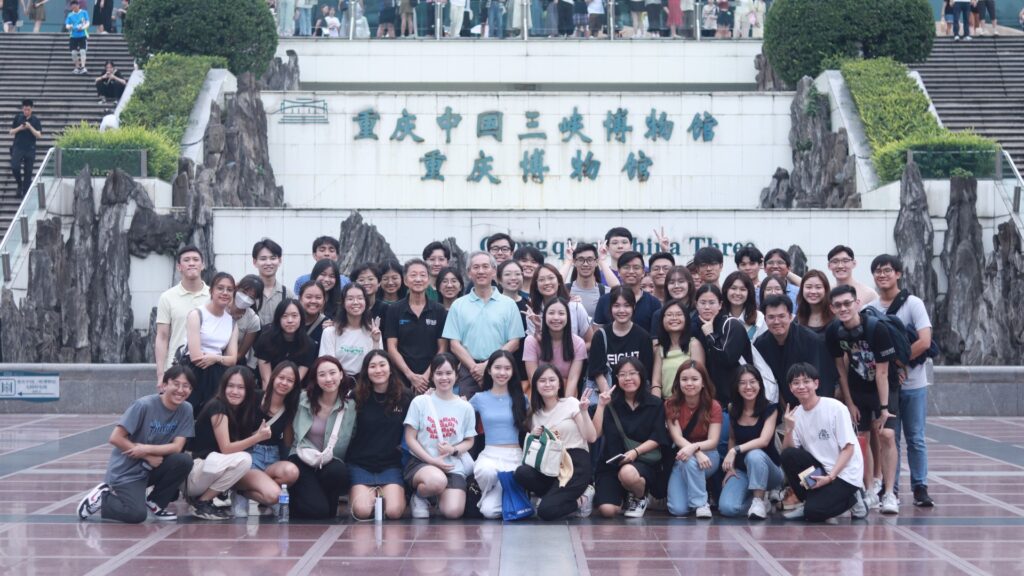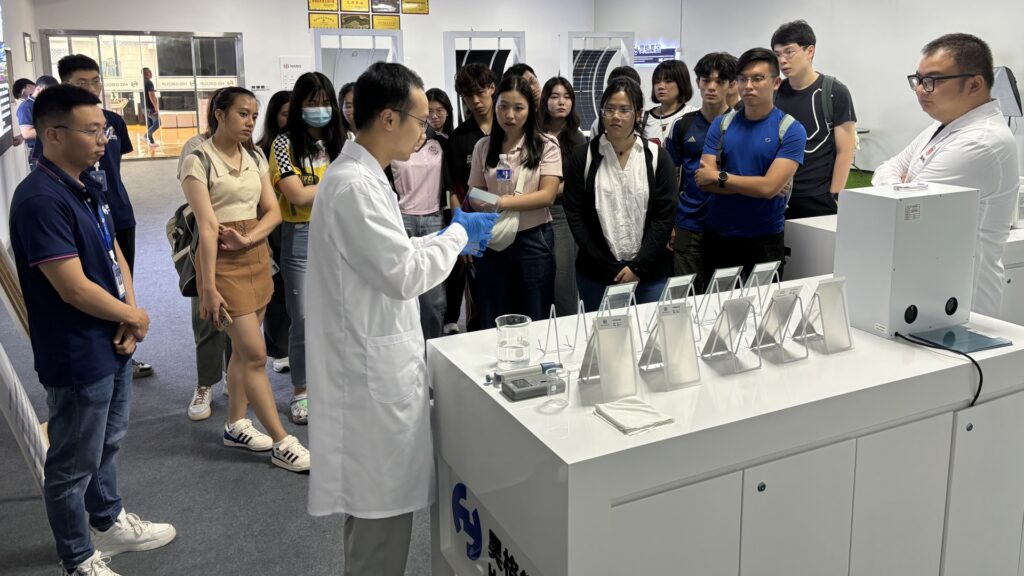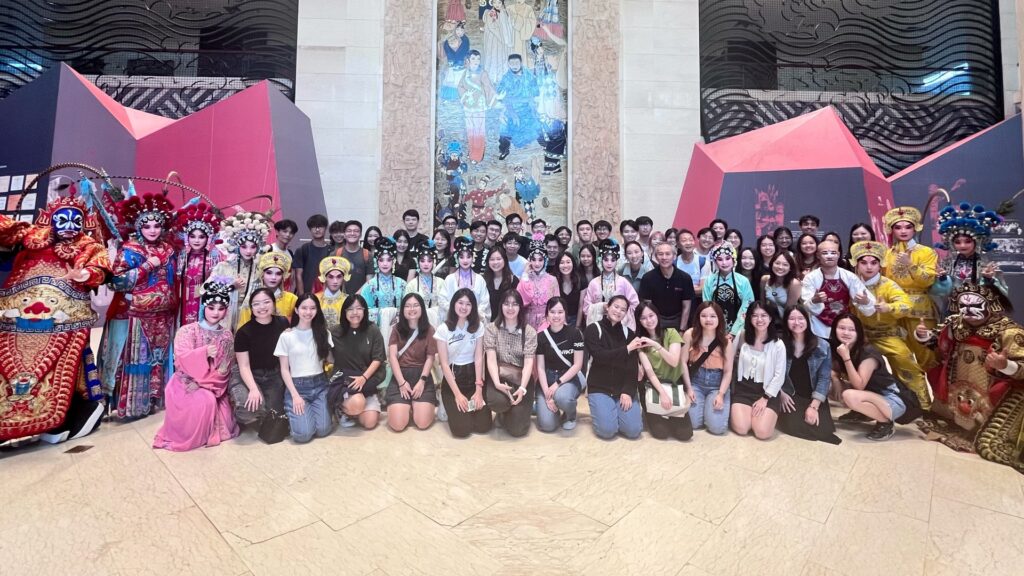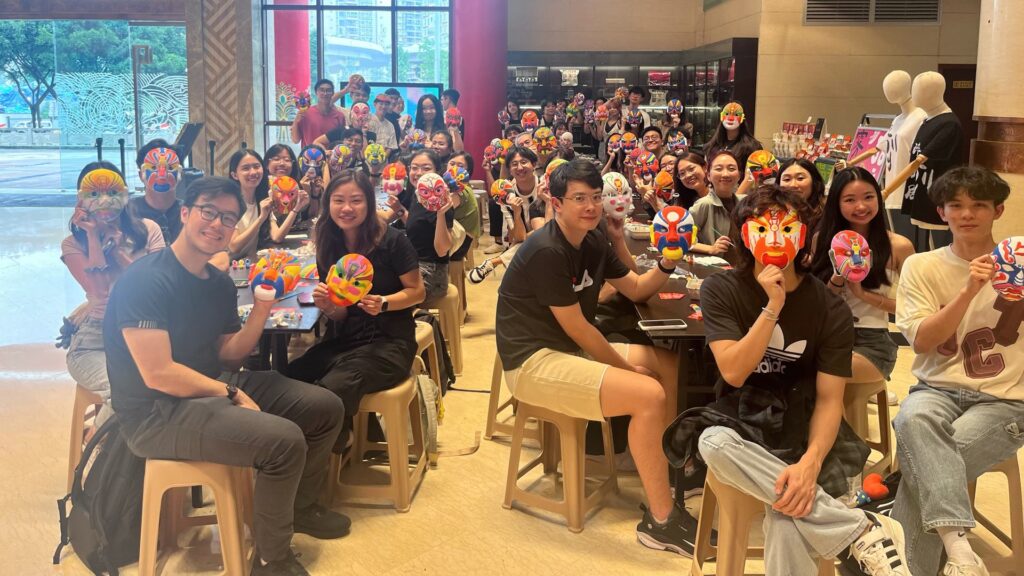STEER trip to Chongqing and Chengdu Takes Students on a Journey Exploring a Future in Renewable Energy
July 10, 2024
IN BRIEF | 10 min read
- The STEER Chongqing and Chengdu trip yielded a unique experience where classroom learning was complemented by outdoor and cultural exposure, such as visits to heritage sites and learning about Chongqing’s urbanisation journey at the Three Gorges Museum (pictured) and Chongqing Museum.

Singapore’s existence can seem like a paradox in the energy sector; the country has almost zero natural resources, yet it is able to import enough energy to meet its population’s ever-growing energy demands. While some may know that the bulk of our energy needs is fuelled by liquified natural gas supplies, few would know how ‘clean’ the various energy sources are, or how a country could transition into fully using renewable sources for their energy needs.
These questions were top of mind for a group of 54 NUS students when they took off to the cities of Chongqing and Chengdu in China on 17 June 2024, on a Study Trips for Engagement and EnRichment (STEER) trip jointly organised by NUS Global Relations Office and NUS Research Institute in Chongqing (NUSRI-CQ).
STEER programmes are designed to expose students to the diverse sociocultural environments of emerging regions through a mix of thematic classroom-based learning, experiential site visits and immersive interactions with various local communities.
Hailing from various faculties, these students were led by Emeritus Professor Seah Kar Heng and Associate Professor Loh Wai Lam, both from the NUS College of Design and Engineering, on the two-week programme which began by exposing them to the development and application of renewable energy sources in Chongqing. The students were then immersed in the cultural activities in Chengdu, where they learnt about one of the oldest functioning irrigation systems in the world, the history of the Three Kingdoms in ancient China, and made a visit to see the irresistibly cute pandas.

Securing a future in renewable energy
The ten classroom sessions held at NUSRI-CQ that were designed to familiarise students with the socio-cultural-economic context of renewables and their evolving role in China and in other countries formed a key plank of the programme. Facilitated by Emeritus Prof Seah, Assoc Prof Loh, and Associate Professor Li Meng, guest lecturer from Chongqing University, the sessions provided insights into the challenges of reducing global dependency on oil and gas, even as energy alternatives such as solar, hydro and wind power increasingly permeate the energy sector. Students also considered the multi-faceted trade-offs between long-term environmental protection and the immediate benefits of industrial production and consumerism.
Describing the lectures as ‘fun and engaging’, Ong Jia Yee (Year 4, Data Science and Analytics) said the sessions added to the insights she gained through her internship at a major shipping company, where she was exposed to the obstacles faced by the industry in their energy transition. “It was intriguing to scale up my perspectives to understand the difficulties and comparative advantages of various countries in adopting different forms of renewable energy,” she said.

The introductory lectures were seamlessly complemented with various industry visits. The STEER cohort received a behind-the-scenes tour of the smart factory at HG Group, a leading photovoltaic (PV) cell manufacturer in China, where they viewed various production processes such as PV cell laser-cutting and the use of high-heat resin to adhere laminated material to the board.
Students also had the opportunity to interact directly with scientists involved in research and development at HG Group, and even enjoyed a preview of its latest innovation: a flexible solar panel which can be wrapped around building surfaces without compromising on the solar absorption efficiency. Students also learnt of the company’s commitment to sustainability through urban mining, where valuable metals such as silicon, copper and zinc are extracted from degraded panels after their ten-year shelf life, and then recycled for future production.
For Sie Choon Hong, a second-year undergraduate from NUS Communications and New Media, the trip was a ‘thought-provoking’ one that augmented his understanding of sustainability. “I was able to engage with experts and witness innovative sustainability projects first-hand. These experiences left me more determined than ever to promote sustainable practices through my studies and future career,” he said. As a recent volunteer at a Singapore social enterprise on food wastage, he had become curious to learn more about what it means for companies and countries to ‘go green’.
Of pandas and plains: Immersion into a rich cultural heritage
The STEER cohort also enthusiastically immersed themselves in the varied cultural heritage icons of Chongqing and Chengdu. The experiences satiated all senses, from a literal feast of Sichuan hotpot to a visual feast of a live Sichuan opera performance. With their extensive use of colours and theatrical props, the bian lian performance enthralled the audience and evoked the vibrancy of Sichuan playwrights. Bian lian ('Face-Changing') is an ancient Chinese dramatic art where performers don vividly coloured masks, switching from one face to another almost instantaneously with the swipe of a fan, a movement of the head, or wave of the hand.


In Chengdu, visiting the Dujiangyan Panda Valley provided the students with additional perspectives on the intersection between environmental protection and cultural preservation. They learnt about the immense efforts taken to revitalise the population of giant pandas, which are currently classified as ‘vulnerable’. These conservation efforts will take decades, underscoring the importance of protecting the environment given the potential for pollutive activities to have long-standing repercussions across the animal kingdom and the significance of building a cleaner future today.
Students also visited the ancient Dujiangyan irrigation system, a UNESCO World Heritage Site located at the west Chengdu plain, which was constructed around 256 BC as an irrigation and flood control project. Despite its age and long-running history, this engineering marvel remains in use today, channelling the Min River to irrigate 6687km2 of farmland. The students were inspired by the innovative spirit of ancient hydrologist Li Bing, who in the absence of modern machinery, ingeniously alternated between fire and water to rapidly heat and cool rocks until they cracked and could be easily removed, clearing the channel in the span of eight years.
After a fulfilling and insightful learning journey, the trip participants were joined by Mr Joel Tan, Singapore Consul-General in Chengdu, at the closing dinner. “It is heartening to see how NUS students have maximised their opportunities to learn beyond the university, and embraced these occasions to immerse in other cultures,” said Mr Tan.

Emeritus Professor Seah also welcomed students to embark on future STEER trips to Chongqing: “Whenever you see videos or photos of famous places in Chengdu or Chongqing, you can proudly say, “Been there, done that!”
This story by the NUS Global Relations Office first appeared in NUSNews on 10 July 2024, as part of a series covering Commencement 2024, and celebrating the achievements of NUS graduates from the Class of 2024.

